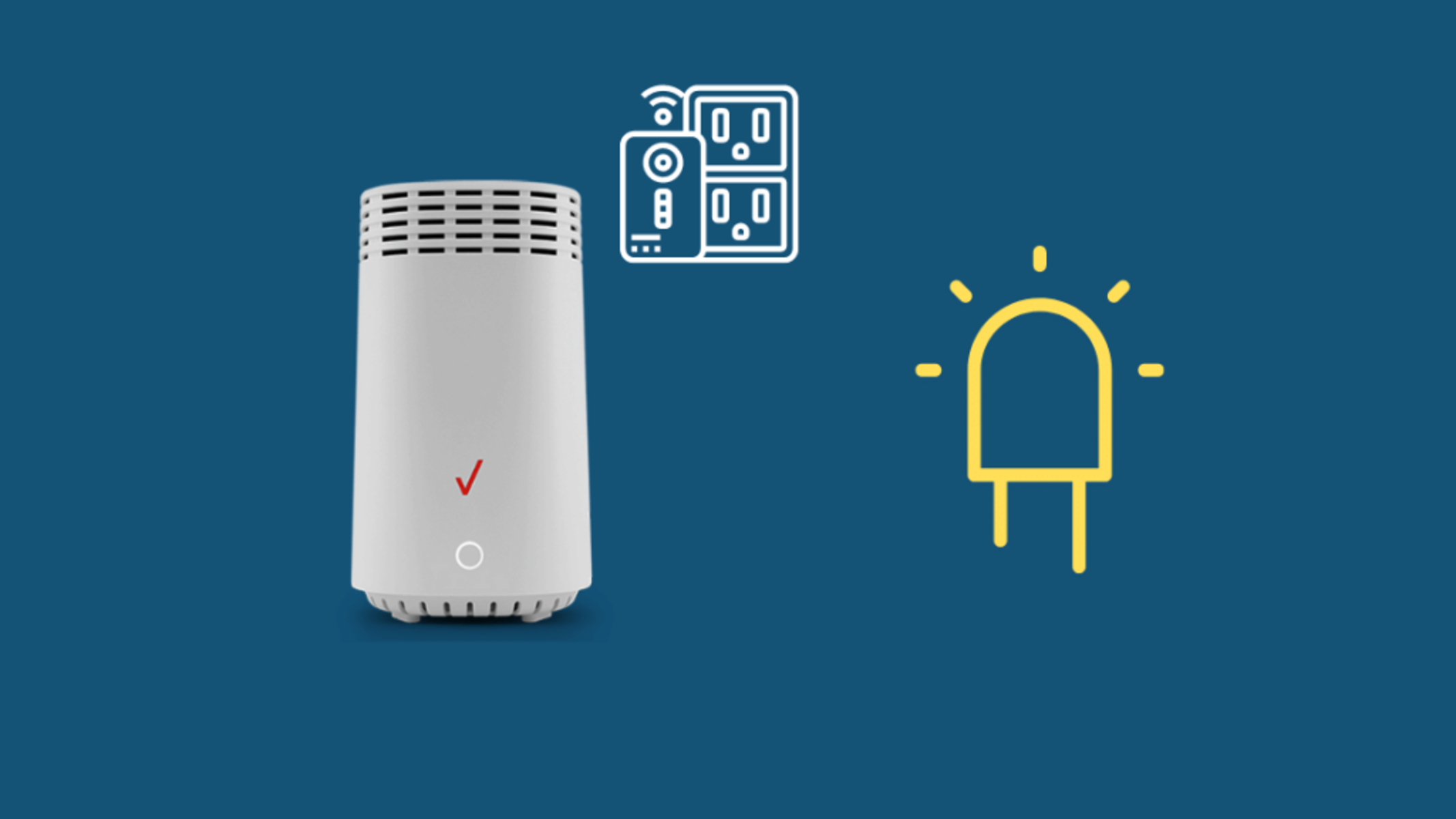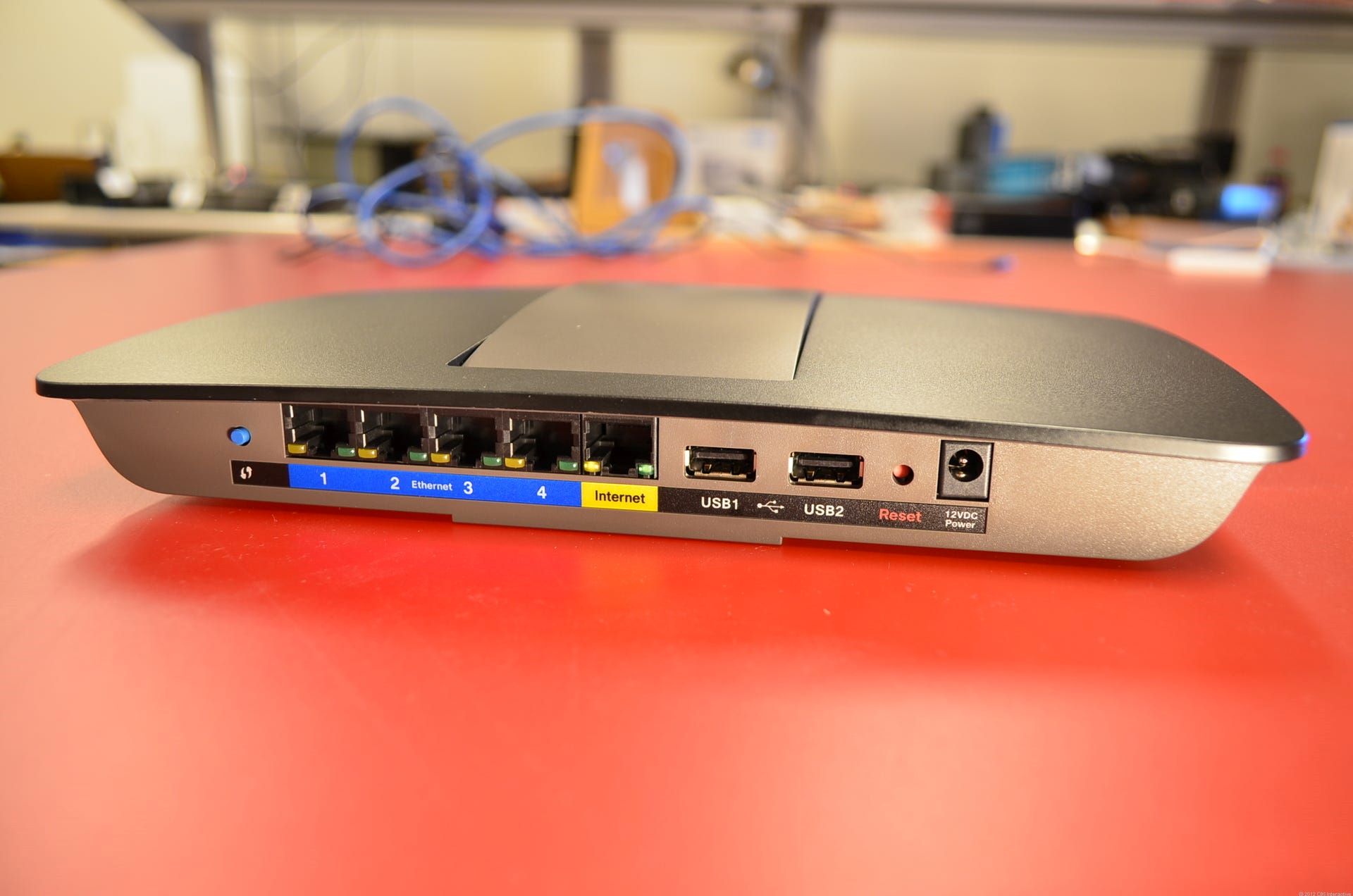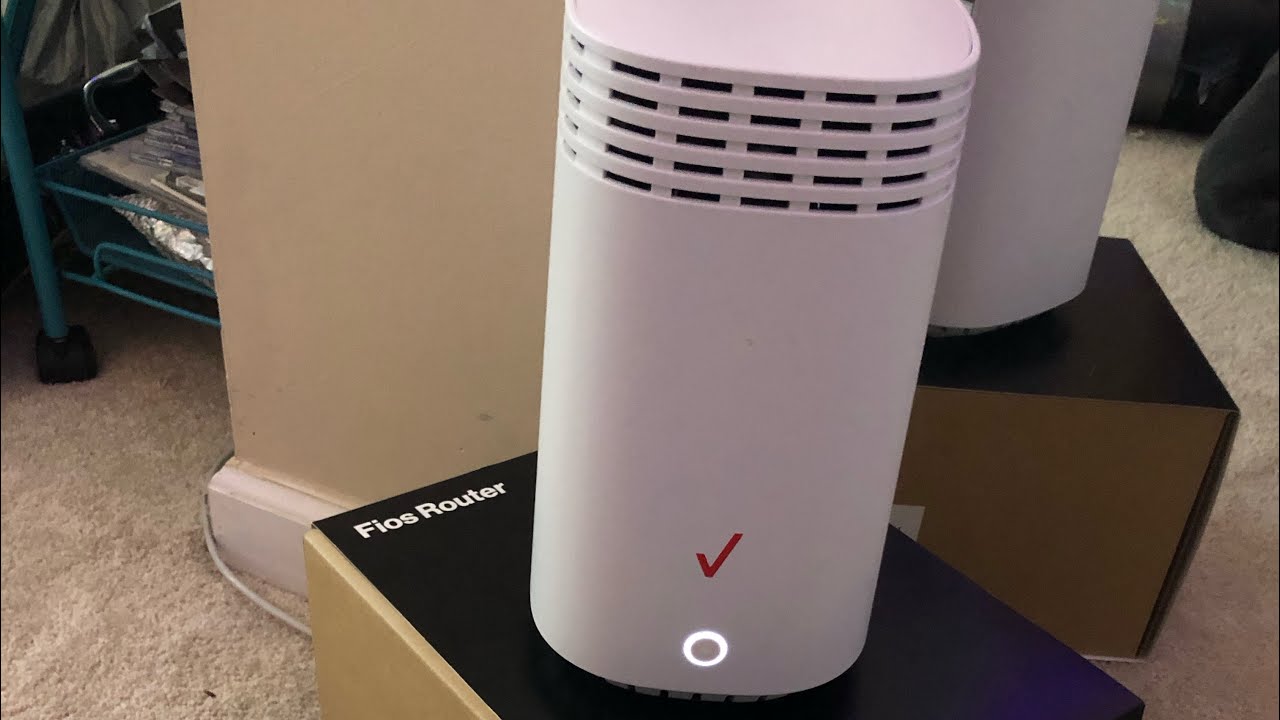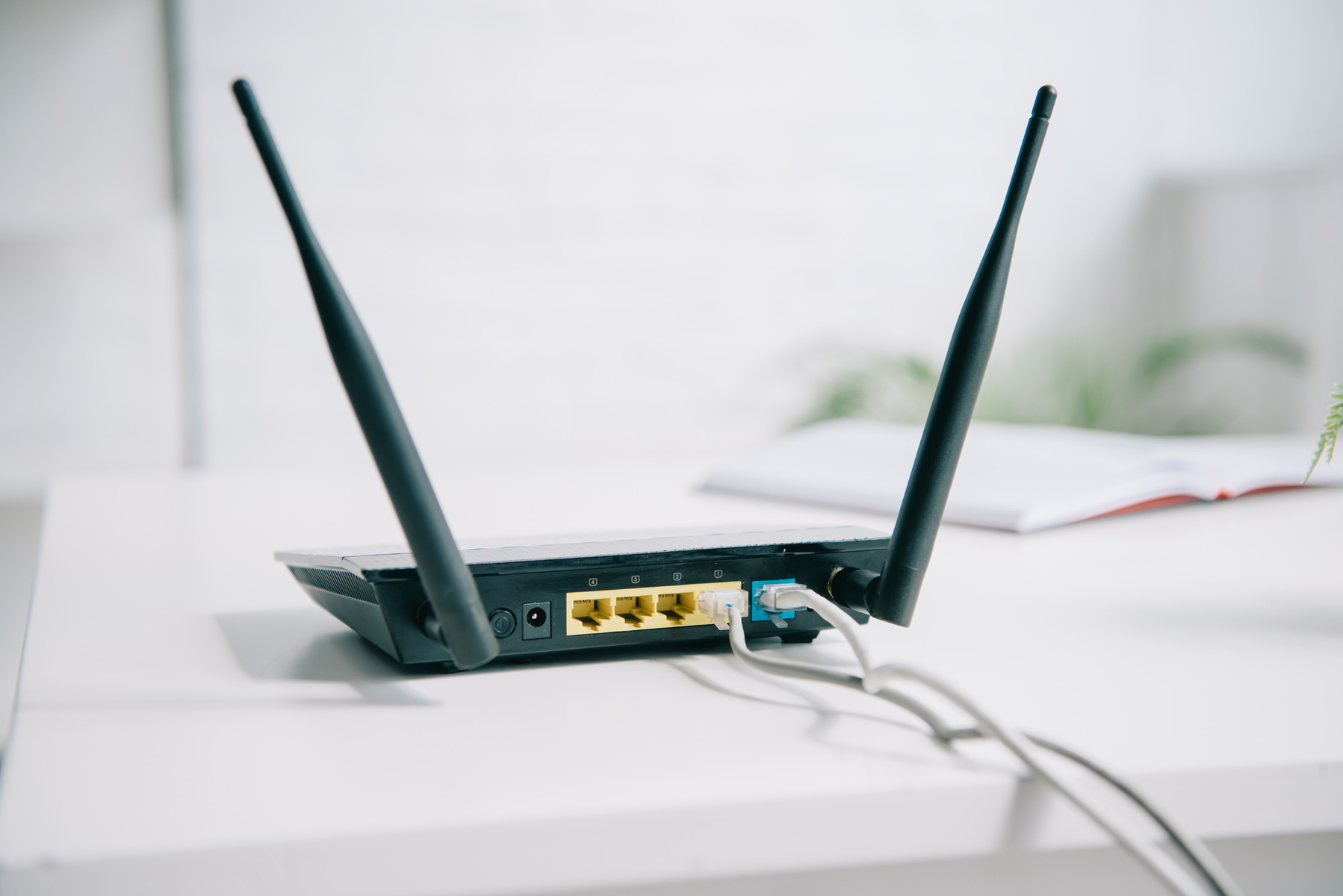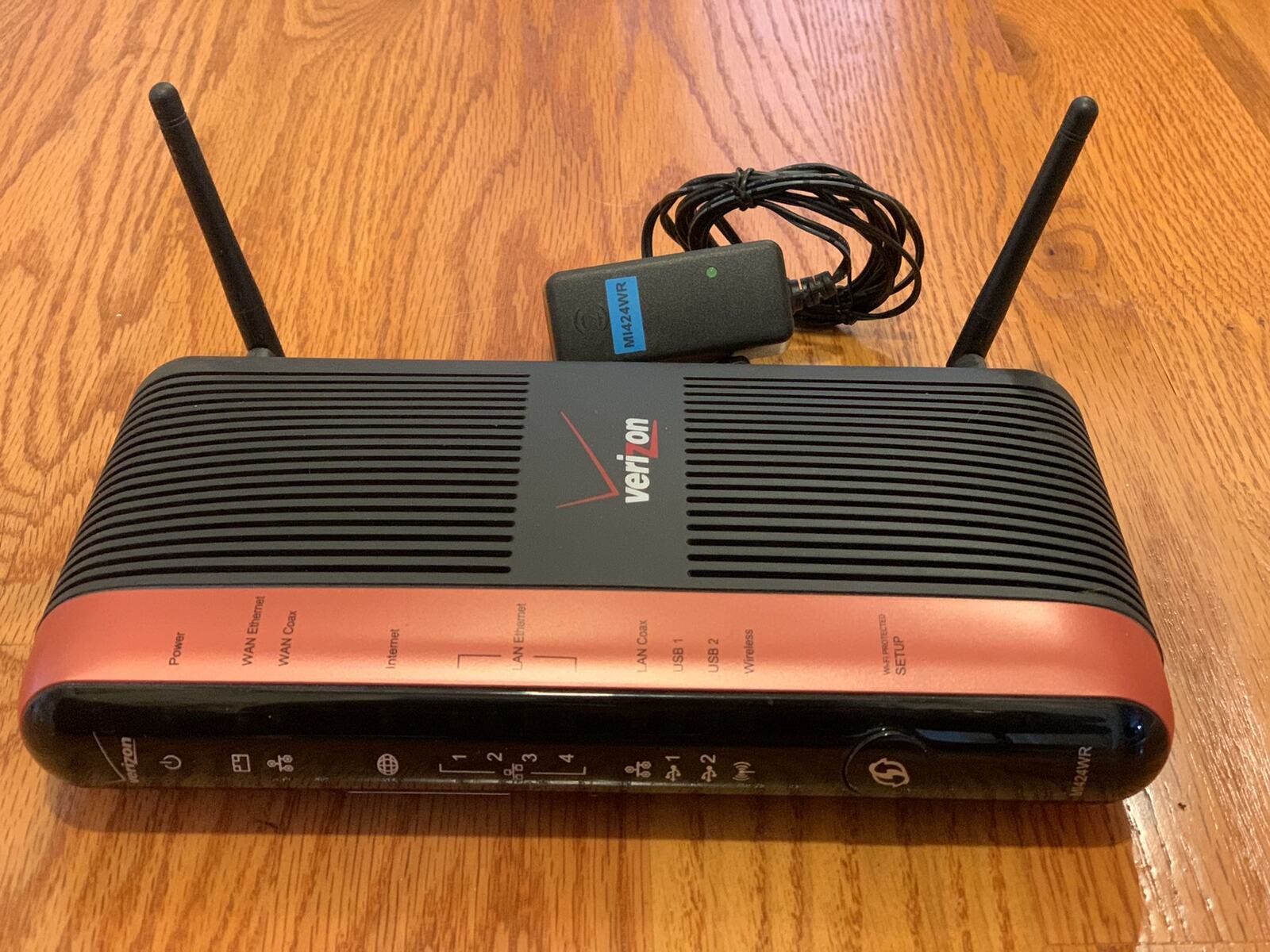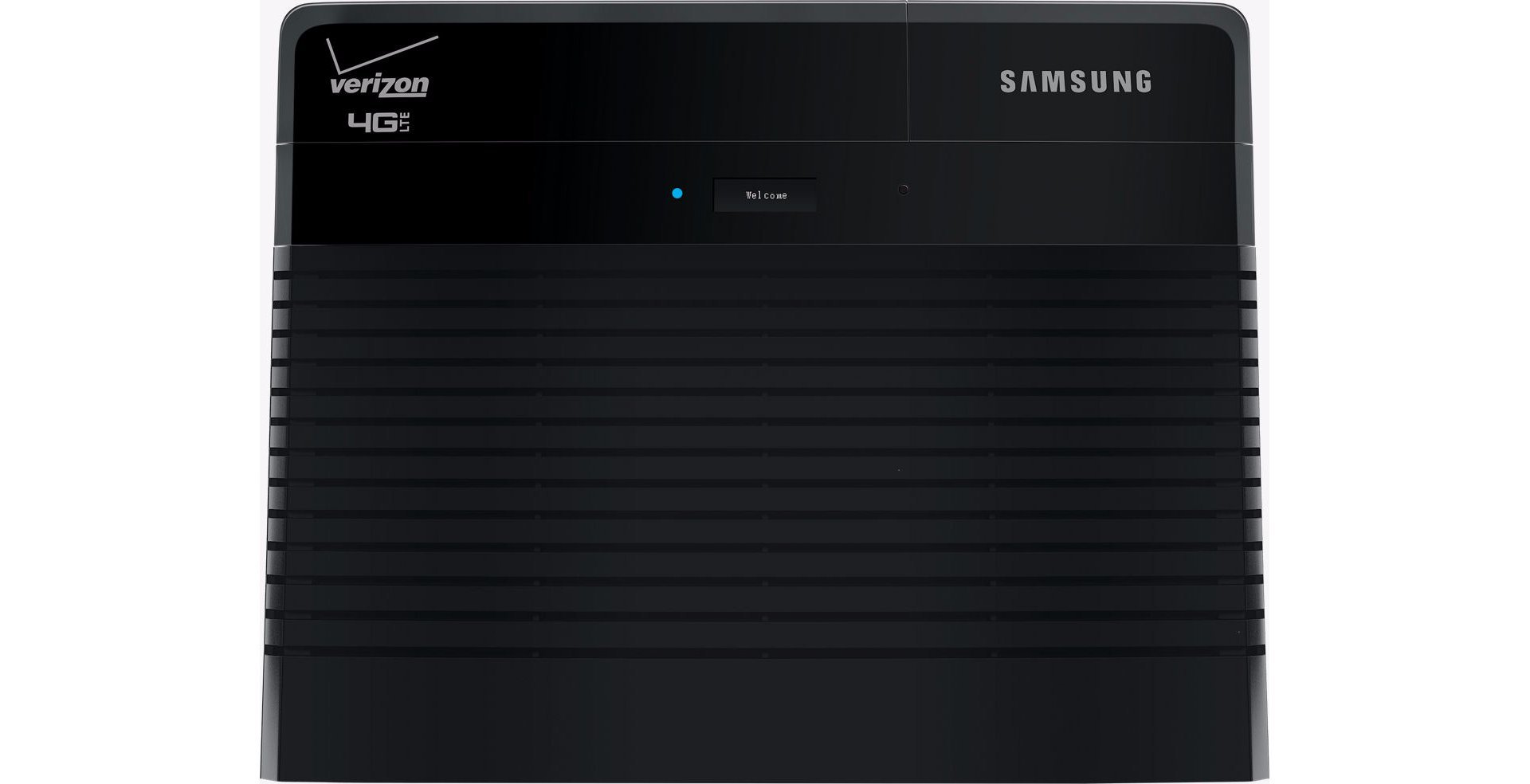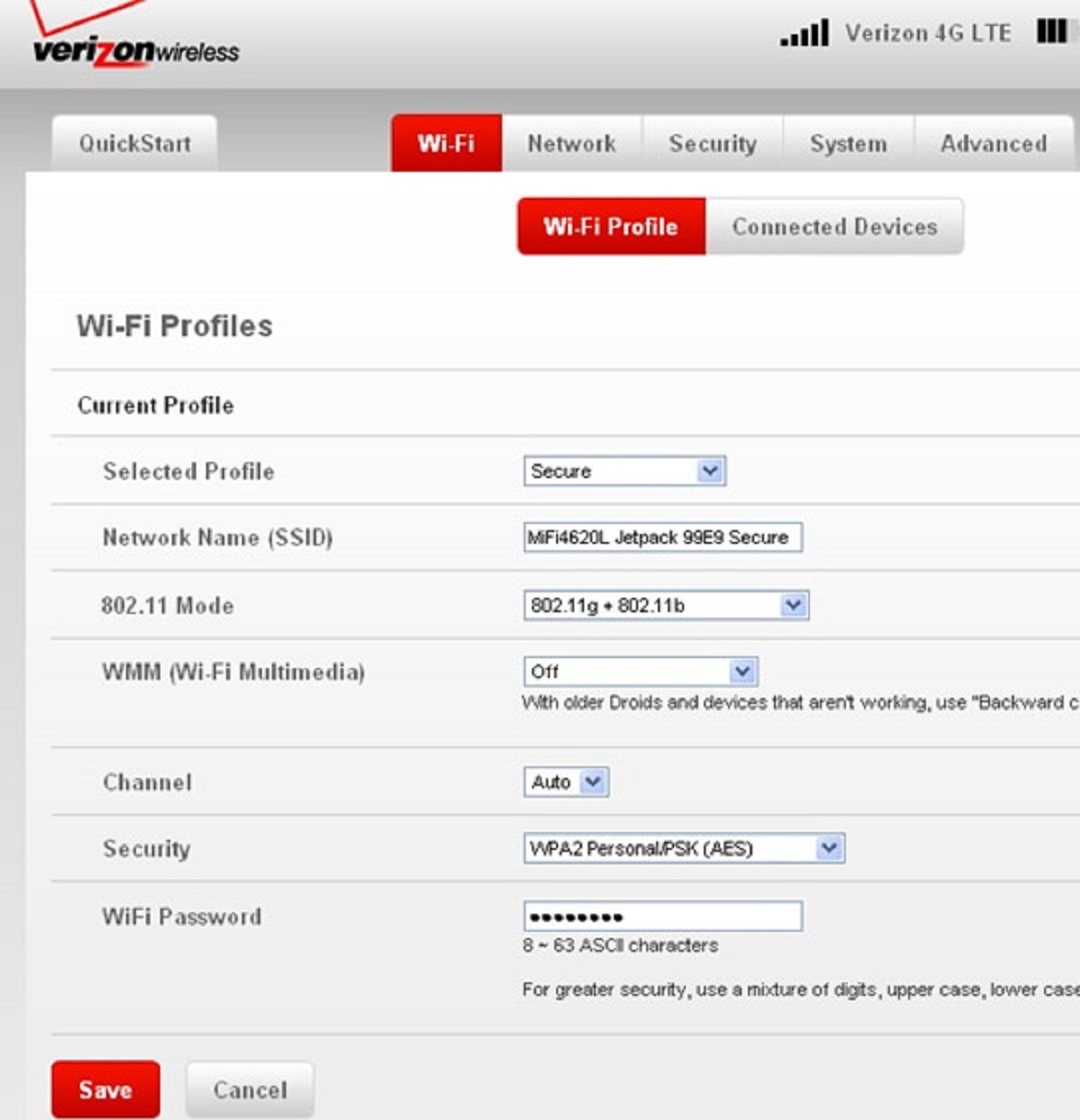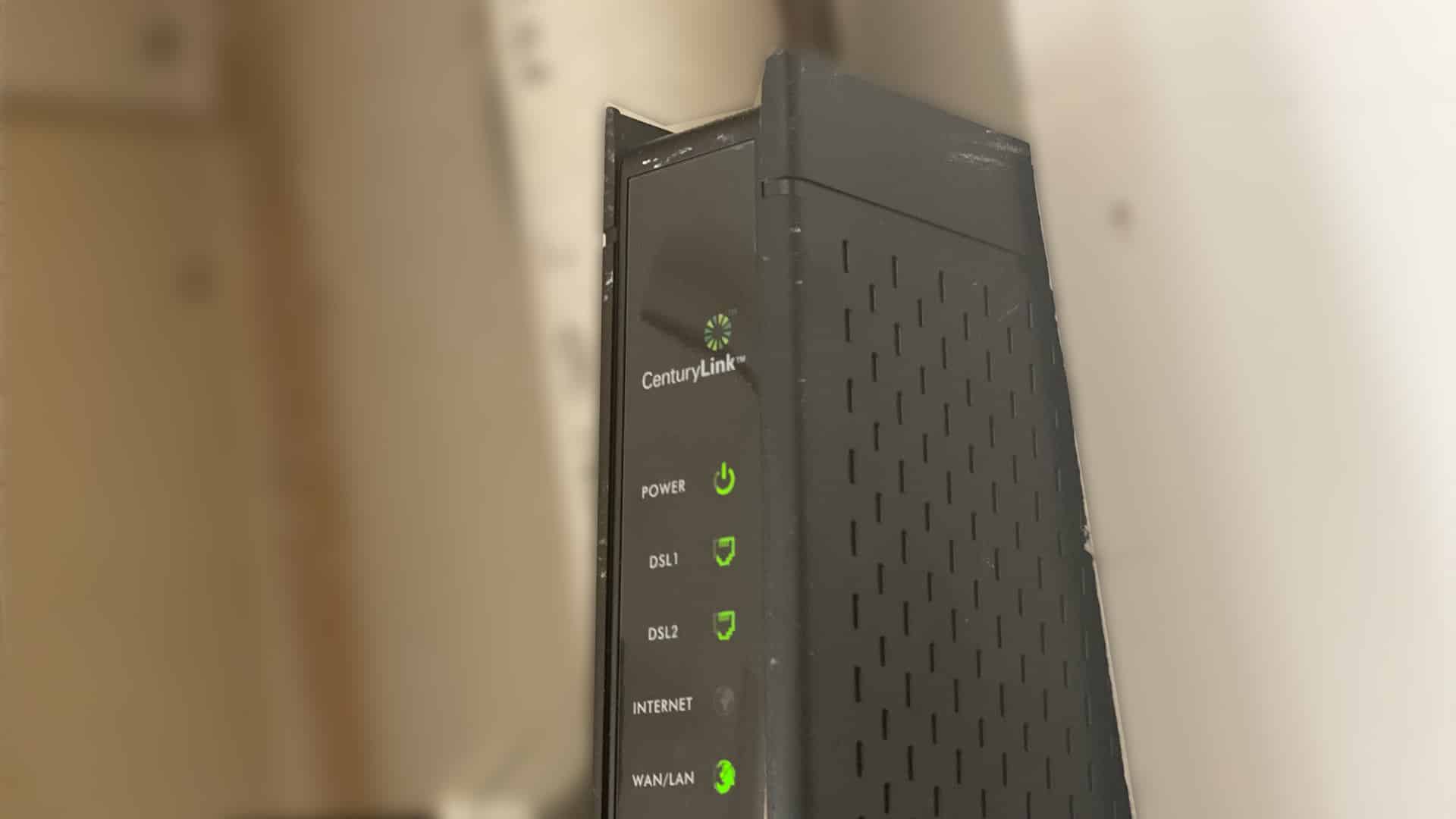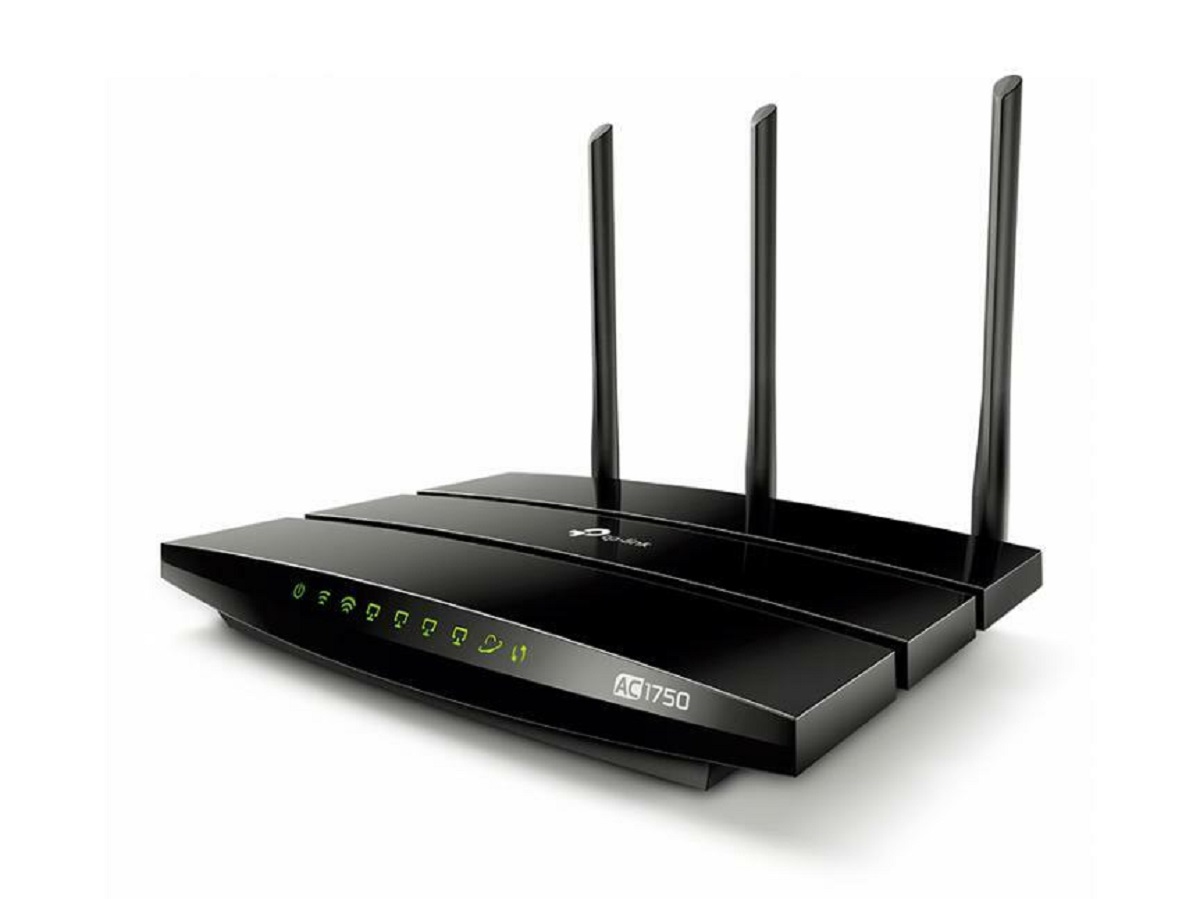Introduction
Welcome to the world of wireless connectivity, where your Verizon Wireless Router serves as the gateway to your online universe. Whether you’re streaming your favorite shows, gaming with friends, or working from home, a reliable and fast internet connection is essential. However, there may come a time when you encounter connectivity issues or notice a drop in performance. Before you despair, there’s a simple troubleshooting step you can take: resetting your Verizon Wireless Router.
Resetting your router can help resolve various issues, such as network congestion, firmware glitches, or interface conflicts. It essentially restores the router to its default factory settings, eliminating any customized configurations that may be causing problems. While it may seem like a daunting task, the process is quite simple and can be completed within a few minutes.
In this guide, we will explain why you might need to reset your Verizon Wireless Router and provide step-by-step instructions to help you through the process. We will also address common issues that may arise after resetting and offer troubleshooting tips to get your router back up and running smoothly.
So, if you’re ready to regain control of your wireless connection, let’s dive into the world of resetting your Verizon Wireless Router and discover how it can resolve your connectivity woes.
Reasons to Reset Your Verizon Wireless Router
Despite the convenience and reliability of your Verizon Wireless Router, there are times when resetting it becomes necessary. Here are some common reasons why you might need to reset your router:
- Network connectivity issues: If you are experiencing frequent drops in your internet connection, slow speeds, or difficulty connecting to specific websites or devices, resetting your router can help resolve these issues. It clears out any temporary network glitches that may be causing the problem.
- Firmware updates: Occasionally, your router’s firmware may need to be updated to enhance performance, add new features, or address security vulnerabilities. Resetting the router can ensure that the latest firmware is properly installed and activated.
- Router configuration conflicts: Sometimes, changes made to your router’s settings, such as port forwarding or IP address assignments, can lead to conflicts that disrupt your network connection. By resetting the router, you can start with a clean slate and avoid any conflicting configurations.
- Router performance issues: Over time, your router’s performance may degrade due to memory leaks or excessive device connections. Resetting the router allows it to clear out any accumulated errors and reestablish optimal performance.
- Security concerns: If you suspect that your router has been compromised or unauthorized individuals have gained access to your network, resetting the router can effectively remove any malicious configurations or unauthorized devices from your network.
While resetting your Verizon Wireless Router can be a useful troubleshooting step, it’s important to note that it should not be the go-to solution for every network issue. Before resetting, try simple fixes such as power cycling the router, checking cable connections, or restarting your devices to rule out any temporary glitches.
Now that we understand the reasons behind resetting your router, let’s move on to the step-by-step process of how to reset your Verizon Wireless Router.
How to Reset Your Verizon Wireless Router
Resetting your Verizon Wireless Router is a relatively straightforward process. Here’s a step-by-step guide to help you through it:
- Step 1: Locate the Reset Button: Look for a small reset button on your router. It is typically located on the back or bottom of the device. You may need a paperclip or a similar tool to press the button.
- Step 2: Press and Hold the Reset Button: Gently press and hold the reset button for about 10-15 seconds. Be sure to hold it down until you see the lights on the router flash or until the power light blinks. This indicates that the reset process has been initiated.
- Step 3: Wait for the Router to Restart: After releasing the reset button, give your router a few moments to reboot. During this time, the router is restoring its default factory settings. You may notice the lights on the router flashing or cycling through different colors. Once the lights stabilize, the router has successfully reset.
- Step 4: Set Up Your Router Again: With the router reset, it’s time to set it up again. Connect your computer or device directly to the router using an Ethernet cable. Open a web browser and enter “http://192.168.1.1” or “http://192.168.0.1” in the address bar. This will take you to the router’s configuration page. Follow the on-screen prompts to enter your username and password, set up a new Wi-Fi network name (SSID), and secure your network with a strong password.
It’s important to note that resetting your router will erase all custom configurations you previously set up, including Wi-Fi passwords and port forwarding settings. Make sure to have a record of these settings or take screenshots before resetting, so you can restore them afterward.
Once you’ve completed the setup process, test your internet connection to ensure everything is working correctly. If you still experience connectivity issues, you may need to contact Verizon technical support for further assistance.
Now that you know how to reset your Verizon Wireless Router, let’s move on to the next section, where we will address common issues that may arise after resetting and provide troubleshooting tips.
Step 1: Locate the Reset Button
The first step in resetting your Verizon Wireless Router is to locate the reset button. The location of the reset button may vary depending on the router model, but it is typically found on the back or bottom of the device. Here’s how you can locate it:
- Check the back panel: Look at the rear side of your router for a small button labeled “Reset” or “RST.” It is often recessed to prevent accidental resetting.
- Inspect the bottom of the device: Some router models have the reset button on the bottom. Turn your router upside down and examine the label or look for a small hole that indicates the location of the reset button.
- Refer to the router’s manual or manufacturer’s website: If you’re having trouble finding the reset button, consult the user manual that came with your router or visit the manufacturer’s website. They usually provide detailed diagrams and instructions specific to your router model.
Once you have located the reset button, make sure to prepare a paperclip or a similar thin object that can be used to press the button. This will be needed in the following steps to initiate the reset process.
Remember that resetting your router will restore it to its default factory settings, erasing any custom configurations you have made. Therefore, it is crucial to back up any important settings or take note of them before proceeding with the reset.
Now that you know how to locate the reset button, let’s move on to the next step, where we will guide you through the process of pressing and holding the reset button to initiate the reset.
Step 2: Press and Hold the Reset Button
After locating the reset button on your Verizon Wireless Router, it’s time to move on to the next step: pressing and holding the reset button. This step initiates the reset process and restores the router to its default factory settings. Follow these instructions to complete this step:
- Prepare a thin object: To press the reset button, you will need a paperclip, a pen tip, or any other small, pointed object that can fit into the reset button’s recessed opening.
- Ensure the router is powered on: Make sure that your router is powered on and connected to a reliable power source. It is important for the reset process to be initiated while the router is operational.
- Locate the reset button: Refer to the previous step to identify the exact location of the reset button on your router. It is usually a small, recessed button on the back or bottom of the device.
- Press and hold the reset button: Gently insert the thin object into the reset button’s opening and apply light pressure. Press and hold the button for approximately 10-15 seconds. You may notice the router’s lights blinking or the power light blinking to indicate that the reset process has started.
- Release the reset button: After holding the reset button for the required time, release it. The router will now begin the reset process and restore its default factory settings.
It’s important to note that during the reset process, the router will temporarily disconnect from the internet and any devices connected to it. This is normal, as the router clears out its previous configurations and prepares to start fresh.
Now that you have successfully pressed and held the reset button, you can move on to the next step, where we will explain what happens after the router restarts and guide you through setting up your router again.
Step 3: Wait for the Router to Restart
After pressing and holding the reset button on your Verizon Wireless Router, the next step is to patiently wait for the router to restart. This step allows the router to restore its default factory settings and clear out any previously saved configurations. Follow these guidelines as you wait for the router to complete the restart process:
- Release the reset button: After holding the reset button for the required time, release it. The router will now begin the restart process automatically.
- Observe the router’s lights: As the router restarts, you may notice the lights on the device flashing, blinking, or cycling through different colors. This is an indicator that the router is in the process of rebooting and restoring default settings. Allow this process to complete without interrupting it.
- Be patient: Depending on your specific router model, the restart process can take a few minutes. It is important to be patient and refrain from unplugging or interfering with the router during this time. Any interruption could result in incomplete reset or further complications.
- Stabilization of lights: Once the router has finished restarting, you will notice that the lights on the device stabilize. The specific light patterns may vary depending on your router model, but typically, you will see the power light become solid or stop blinking. This signals that the router has successfully reset itself.
It is important to keep in mind that during the restart process, your internet connection will be temporarily disrupted. This is normal, as the router is clearing out its previous settings. After the router has restarted, you can proceed to the next step, where we will guide you through setting up your router again.
Now that you have waited for the router to restart and stabilize, let’s move on to the final step, where we will explain how to set up your Verizon Wireless Router again.
Step 4: Set Up Your Router Again
After your Verizon Wireless Router has successfully restarted, it’s time to proceed with the final step: setting up your router again. Follow these instructions to get your router up and running:
- Connect your computer or device: Using an Ethernet cable, connect your computer or device directly to one of the LAN ports on the router. This will ensure a stable connection during the setup process.
- Launch a web browser: Open a web browser of your choice, such as Google Chrome, Mozilla Firefox, or Internet Explorer.
- Type the router’s IP address: In the address bar of the web browser, enter either “http://192.168.1.1” or “http://192.168.0.1”, depending on your specific router model. Press Enter to access the router’s configuration page.
- Enter your username and password: On the login page, enter the default username and password for your router. If you haven’t changed these settings before, you can find them in the user manual or on the manufacturer’s website. If you’ve previously modified the username and password, enter the updated credentials.
- Follow the setup wizard: Once logged in, you will likely be guided through a setup wizard or a series of on-screen prompts. These will allow you to configure your router according to your preferences. You may be prompted to set up a new Wi-Fi network name (SSID), select a security protocol, and create a strong password. Follow the instructions provided and make the necessary selections.
- Apply the settings: After completing the setup wizard, review the settings you have chosen. Once you are satisfied, find the option to apply or save the changes. Click on the appropriate button to finalize the configuration.
With the setup process completed, disconnect your computer or device from the router’s LAN port and connect to your newly configured Wi-Fi network using the provided credentials. Verify that you have a stable internet connection by browsing websites or running a speed test.
If you encounter any issues during the setup process or have difficulty accessing the router’s configuration page, refer to the user manual or contact Verizon technical support for further assistance.
Congratulations! You have successfully reset and set up your Verizon Wireless Router. Enjoy your renewed and optimized internet experience!
Troubleshooting Common Issues After Resetting
After resetting your Verizon Wireless Router, you may encounter a few common issues that can be easily resolved. Here are some troubleshooting tips to help you address these issues:
- Wi-Fi network not visible: If you can’t see your Wi-Fi network after resetting the router, ensure that the SSID (network name) you set during the setup process matches the Wi-Fi name on your devices. Also, check that the Wi-Fi broadcast is enabled in your router’s settings.
- No internet connectivity: If you’re connected to the Wi-Fi network but don’t have internet access, verify that your broadband service is active and running properly. Power cycle your modem, wait for it to fully restart, and then power cycle your router to establish a fresh connection.
- Slow internet speeds: If you experience sluggish internet speeds after resetting, run a speed test to ensure you are getting the internet speed you subscribed to. If the speeds are significantly lower, contact your internet service provider to troubleshoot the issue.
- Connectivity issues with specific devices: If you’re having trouble connecting certain devices to your Wi-Fi network, make sure the devices are within range of the router and that the correct Wi-Fi password is entered. Additionally, check if the devices are updated with the latest firmware or drivers.
- Port forwarding not working: If you previously set up port forwarding for specific applications or services, make sure to reconfigure the port forwarding settings after resetting the router. Refer to your router’s user manual or online documentation for instructions specific to your model.
If these troubleshooting steps do not resolve your issues, you may need to reach out to Verizon’s technical support for further assistance. Their expert team can help investigate and resolve more complex issues that may arise after resetting your Verizon Wireless Router.
Remember, resetting your router should be a last resort and only used when necessary. If you find yourself having to reset your router frequently, it may indicate an underlying problem that should be addressed by professional support.
Now that we’ve covered troubleshooting common issues, you should be equipped to resolve any post-reset difficulties that may arise. Enjoy your uninterrupted wireless connection and maximize your online experience!
Conclusion
Resetting your Verizon Wireless Router can be an effective solution to resolve various connectivity issues, restore optimal performance, and address security concerns. Throughout this guide, we have walked you through the reasons to reset your router, the step-by-step process of resetting, and troubleshooting common issues that may arise after the reset.
We discussed the importance of identifying the reset button’s location on your router and the need to press and hold it to initiate the reset process. We then provided guidance on patiently waiting for the router to restart and stabilize, followed by setting up the router again with the necessary configurations.
It’s worth noting that resetting your router should be done as a last resort, after attempting simpler troubleshooting steps such as power cycling or checking connections. Additionally, documenting your custom configurations before resetting can help in restoring them quickly afterward.
If you encounter any challenges during the reset process or experience ongoing issues with your Verizon Wireless Router, don’t hesitate to contact Verizon’s technical support. They are there to provide expert guidance and assist you in resolving more complex problems.
By following the steps outlined in this guide and applying the troubleshooting tips, you can regain control over your wireless connection and enjoy seamless internet access for all your online activities.
Remember, your Verizon Wireless Router serves as the gateway to your online universe. Keep it running smoothly, and enjoy the boundless possibilities of the digital world!







